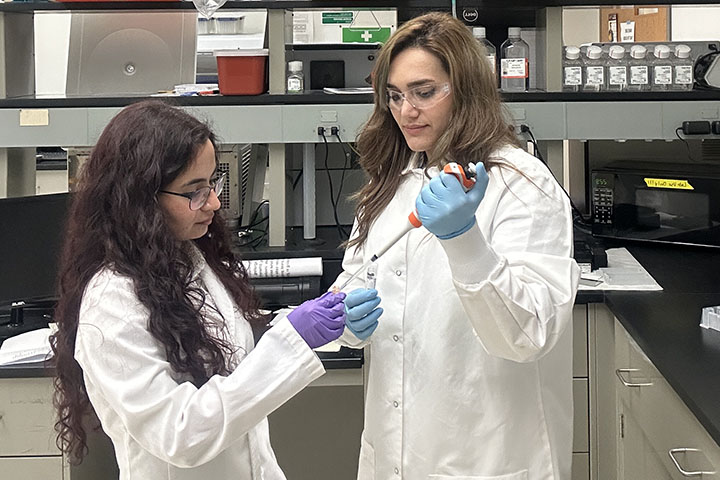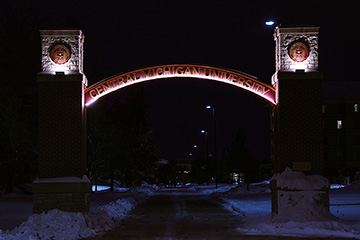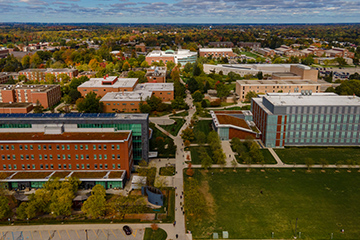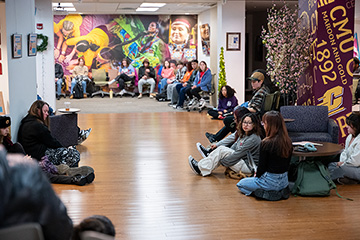Researchers seek one-two punch for brain cancer
Interdisciplinary team focuses on novel treatment, better way to apply it
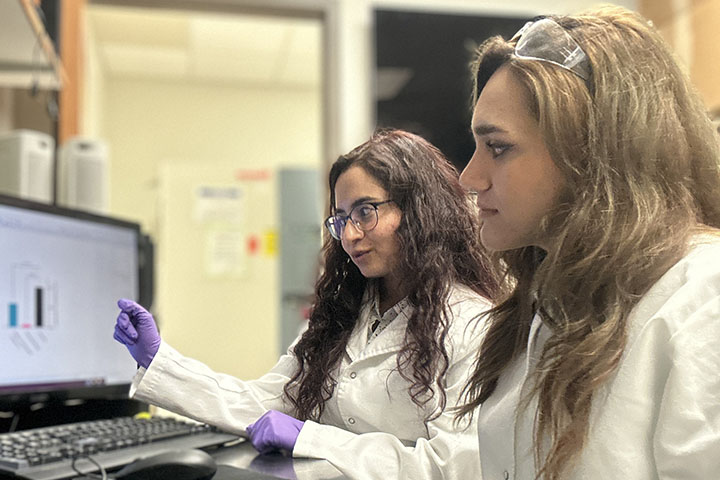
Osheen Dubey is working on a new way to treat an aggressive form of brain cancer. Nadia Khiabani hopes to unlock a more efficient, safer way to deliver it where it’s most needed.
The pair are working as part of an interdisciplinary team of researchers in Central Michigan University’s Neuroscience Program on a new strategy to treat an aggressive form of brain cancer called glioblastoma.
Dubey, a student working on her doctorate in biochemistry, cell and molecular biology in the lab of College of Medicine neuroscientist Eric Petersen, is developing a targeted therapy using tiny, tree-like synthetic molecules called dendrimers.
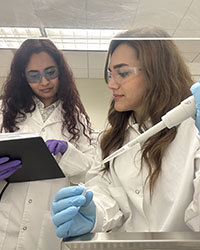
At the end of the “tree’s” branches are receptacles that can hold additional therapies and medicines. She hopes to figure out how to use some of those branches to deliver a genetic treatment that stops tumors from growing and spreading.
The receptacles offer opportunities to add medicine that can attack the cancer itself and maybe even therapies that help someone manage behavioral or cognitive symptoms often caused by brain tumors, Dubey said.
Dendrimers have a big advantage, their small size. They are much, much smaller than a cell and because they carry an opposite charge than a cell’s membrane they get pulled through the membrane when they touch it, Dubey said.
Delivering the dendrimer to the brain is another challenge. The blood-brain barrier cushions the brain and protects it.
“The brain is incredibly well protected, which is great for keeping out toxins but it also blocks most medicines,” said Khiabani, a neuroscience doctoral student in Julien Rossignol’s research lab.
Rossignol, who with biochemist Jesse Bakke mentored Dubey while she was a graduate student, said the nasal spray offers superior potential to the existing options, direct injection into the brain or an indirect route by injecting it into the bloodstream.
"Direct injection into the brain requires great precision and carries risks,” he said. “Injecting drugs into the bloodstream is inefficient because much of the medicine spreads through the whole body before reaching the brain, which can cause side effects.
“We aim to overcome these limitations.”
Both the dendrimers and the nasal delivery have potential beyond glioblastoma.
The researchers hope these tools will also help treat neurodegenerative diseases such as Huntington’s and Alzheimer’s where more targeted and effective delivery could make a meaningful difference.
By combining a promising new therapy with an innovative delivery approach, Dubey, Khiabani and their mentors are working toward a smarter, more precise future in brain disease treatment.
